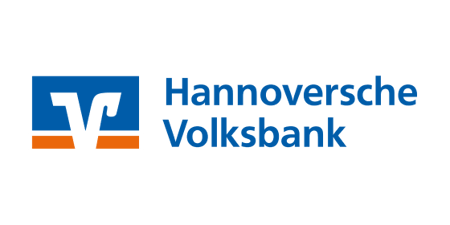
Client:Hannoversche Volksbank
Industry:Banking and Financial Services
Region:Europe
Hannoversche Volksbank Employs Software Robot Tessi to Automate Its Processes

>1900
hours per year for the "VR Netkey" process, a software robot saves 115,000 working minutes
55
processes currently automated 55 with the help of software robots
1,5 years
is what it took for Hannoversche Volksbank to achieve return on investment (ROI), including costs for consulting (three years originally planned)
Client Overview
The Hannoversche Volksbank eG is a cooperative bank located in Hanover. The bank has just over 1,000 employees. It advises and supports private customers and business customers from the retail, craft and commercial sector in the economic region Hanover-Celle-Hildesheim. With a balance sheet total of EUR 6.6 billion, the cooperative credit institution is one of the largest credit unions in Germany and further growth is expected.
Higher data quality, lower costs and more efficient processes—with the introduction of the software robot Tessi, the Hannoversche Volksbank eG reaches its most important business target: growth and more volume while maintaining the same capacity as the existing staff. By applying the UiPath RPA solution, the credit institution automates sales-related processes in particular. Tessi takes over monotonous manual tasks or additional tasks—which put a strain on the core business—from employees. The return on investment (ROI) was achieved after only 1.5 years—three years were originally planned.
Hannoversche Volksbank wants to achieve this growth with the same or decreasing capacities in the back office. The goal is to optimize processes in production that have nothing to do with sales, but are necessary to meet customer requirements. The credit institution is very well positioned in its highly standardized core banking system, but still sees potential for improvement, especially in sales-related production. Here, employees have to enter a lot of data manually, for example when matching customer data, in the area of garnishment or when deleting credit card accounts.
"These are monotonous, time-consuming tasks, which do not offer any added value and also decrease the data quality as a result of errors made during the data input", explains Marco Dierkesmann, Prokurist (authorized signatory) and Head of Market Service at Hannoversche Volksbank. He is responsible for passive production, payment and the overall processes in passive business and services. He is responsible for Securities Service, Production Deposit, Payment and the overall processes for deposit business and services. "We therefore wanted to make the processes for collecting data more efficient, create more volume with the same staff, speed up processing and improve data quality - all this with our own staff without being dependent on an external service provider in the long run. That's how we came across the topic of automation and RPA."
Interdisciplinary RPA Team
The decision for RPA and a suitable solution was made within eight weeks at the end of 2018, as the bank expected a quick return on investment (ROI). UiPath won the contract for the RPA software. The decisive criteria included, the high range of functions, the experience of reference customers, and, in particular, the ease of use.
"UiPath is an application for which I don't have to be a computer scientist, but for which a good knowledge of standard IT topics is sufficient. Itwas very important to us that we could quickly learn it ourselves with our own staff," says Marco Dierkesmann.
He furthermore praises the informative tutorials offered by the UiPath Academy, as well as the competent UiPath employees who supported them with solutions for complex cases. And in addition, UiPath was already certified in the central, national data center of the Volks- and Raiffeisenbanken. The payment model based on modular licenses also won over the bank.
At the beginning of 2019, implementation began. Hannoversche Volksbank formed an overarching RPA team, currently consisting of seven people, which was initially tasked with developing and maintaining robotics processes for three years. This includes IT-savvy bankers who have modeled the processes in the core banking system.
For developing the software robots, the bank uses UiPath Studio, in the meantime supplemented by UiPath Orchestrator for the operation, monitoring, and control of the robots. Marco Dierkesmann explains: "In the beginning, we had developed a management tool ourselves. But since the number of software robots has now risen to over 50, we now control the operation with the Orchestrator."
Communication with Tessi
To involve the employees and take away their fear of change through RPA, Hannoversche Volksbank has developed a communication concept. It markets RPA internally not as a "robot" but as a "technical assistant" called Tessi—including its own logo. For instance, the first success story on the topic of RPA was an interview with Tessi by the company's press officer. In other texts, Tessi then describes how she feels at the moment, what tasks she is currently performing and what activities she has recently learned—and also what she cannot do.
The employees perceive Tessi positively and experience a noticeable relief in their daily work through the automation of processes. This conveys to the employee that expertise and experience are technically irreplaceable. The software robot has also already complained that it gets too little work.
Marco Dierkesmann • Authorized Signatory and Head of Market Service at Hannoversche Volksbank eG
First robot as Door Opener
Hannoversche Volksbank distinguishes in its software robots between transactional robots and list robots, which process larger lists. A dispatcher, a team leader robot, superordinates and distributes the work and triggers the other robots. The very first process that the credit institution optimized with the help of RPA was changing the loan counter-account. It happens about 6,000 to 7,000 times a year that customers change their account from which the bank collects interest and the repayment for a loan. The request for this usually comes by email. To change the contra account, employees previously had to go through several manual steps in the system.
To simplify the task, the RPA team built the transaction robot "Change loan counter account". Now the employees only need to copy the account number from the mail into the task list of the software robot—and it takes over the rest of the process.
"The first software robot was programmed within two days. So we were able to quickly show the management and the employees what a robot is capable of. Our colleagues save themselves 6,000 to 7,000 monotonous tasks per year with the potential sources of error that can occur with manual processing. This was a real breakthrough for marketing the topic of RPA in-house," Marco Dierkesmann is pleased to say.
RPA Relieves Employees
Up to today, the Hannoversche Volksbank only automates processes which are rather burdensome for the employees or which are additional tasks putting a strain on the core business. One example is seizures from private or business customers. Once a seizure is received, the bank has to check whether the person concerned is actually one of the bank's customers and owns accounts which are applicable for seizure. If this is the case, the bank is required to freeze the corresponding accounts. "In 85% of the current cases this is conducted by a software robot. In this way we were able to handle the significant increase in workload over the last few years with the existing capacities." Marco Dierkesmann adds.
In the "VR Netkey" processes, Hannoversche Volksbank saves 115,000 working minutes (approx. 1,900 hours) per year; as here, too, a transaction robot greatly reduces the steps for sales staff. Customers have to sign various contracts and provide information for the online banking application; the employees have to record these and process them in several steps.
Marco Dierkesmann says: "One minute saves us one euro. With the software robots, we not only reduce costs, but also show the sales staff that they gain more time for direct customer contact with the help of RPA".
In addition to transaction robots, Hannoversche Volksbank also programs so-called list robots that process larger Excel lists. An example: in 10,000 securities accounts, an employee would have to set the same indicator in a certain field 10,000 times. A list robot now does this. Another example is AnaCredit, a database with detailed information on individual loans from banks in the euro area. For this, the bank has to collect a lot of data and report it to the Bundesbank. The Bundesbank then reflects this data back in the form of an Excel table. "We first have to prepare this table in order to be able to continue working with it. These are always the same activities," says Dierkesmann. "Since a list robot now takes care of that, we didn't have to create a new position for it."
Outlook: Document Understanding and Artificial Intelligence
Hannoversche Volksbank is very satisfied with the RPA results so far. The return on investment (ROI), including costs for consulting, was already achieved after 1.5 years—originally three years were planned. Other benefits include higher data quality and a lower error rate due to automated processing, lower costs due to the absorption of natural employee fluctuation, and more efficient processes.
"We have achieved our most important business goal: growth and more volume with the same capacities with the existing staff. For us, RPA is not a 'one-hit wonder' with short-term ROI achievement, but we create sustainable improvement with robotic process automation", concludes Marco Dierkesmann.
The next stage of evolution will see the bank combine its software robots with text recognition from Abbyy, a partner in the UiPath ecosystem. Currently, the RPA team is developing a software robot that captures the data from the identity card for the input of customer legitimacy data. Sales staff then no longer need to transcribe the ID card data, but scan it and pass the scan to the robot, which reads the information and completes the process automatically. Other applications with text recognition, machine learning and other AI elements are to follow in the next few years.
Besides, Hannoversche Volksbank cooperates with other cooperative banks on the topic of RPA. Marco Dierkesmann explains: "We exchange software robots with each other or support other banks with our experience as enablers in tackling the topic of RPA. This allows us to expand our business segment."
A selection of software robots at Hannoversche Volksbank.
Dispatcher robot: distributes work and triggers other robots
Transactional robots:
Change loan contra account 1.0: Adjustment of loan accounts with contra account
Change loan contra account 2.0: Adjustment of loan accounts with creation of SEPA mandates.
Attachment receipt: Around 85 percent of attachment receipts are processed automatically
VR Netkey Sprinter: Creation of the Netkey for accessing online banking
Block/unblock/delete online banking: Processes the applications for online banking
Credit card renewal: Order processing in-house
List Robots:
Process extensive lists on a regular basis or on different dates.
Day trading label depot B: modification of 10,000 cases
AnaCredit: Modification and preparation of the Bundesbank feedback file in 7,000 cases
Transaction data: Filing and saving of around 100,000 data records per month
Deleting credit card accounts: about 200 accounts per month
Related case studies
Ready for your own case study?
Speak to our team of knowledgeable experts and learn how you can benefit from RPA.






